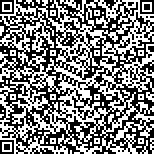| 引用本文: | 邵燕飞,林春琴,钱仁云,沈晓飞,袁晨星,王丹丹,戴洁露,翁勤洁.新橙皮苷对大鼠胚胎-胎仔发育的毒性研究[J].中国现代应用药学,2018,35(12):1782-1785. |
| SHAO Yanfei,LIN Chunqin,QIAN Renyun,SHEN Xiaofei,YUAN Chenxing,WANG Dandan,DAI Jielu,WENG Qinjiev.Embryo and Fetal Developmental Toxicity Study of Neohesperidin in Rats[J].Chin J Mod Appl Pharm(中国现代应用药学),2018,35(12):1782-1785. |
|
| |
|
|
| 本文已被:浏览 2458次 下载 1457次 |

码上扫一扫! |
|
|
| 新橙皮苷对大鼠胚胎-胎仔发育的毒性研究 |
|
邵燕飞1, 林春琴2, 钱仁云2, 沈晓飞2, 袁晨星2, 王丹丹2, 戴洁露2, 翁勤洁2
|
|
1.浙江省人民医院, 杭州医学院附属人民医院, 杭州 310014;2.浙江大学药物安全评价研究中心, 杭州 310058
|
|
| 摘要: |
| 目的 评价新橙皮苷对大鼠胚胎-胎仔发育的毒性。方法 妊娠大鼠根据妊娠第0天(gestation day 0,GD0)和体质量采用分层随机法分成5组:对照(0.5%羧甲基纤维素钠)组,环磷酰胺(12 mg·kg-1)组,新橙皮苷低、中、高(0.45,0.9,1.8 g·kg-1)3个剂量组。妊娠鼠于GD6开始给药至GD15。实验期间,每周至少测定2次体质量和1次摄食量。GD20处死妊娠鼠,对黄体、着床腺、胎仔、胎盘等情况进行检查。结果 试验期间,各组动物临床症状观察均未见明显异常。与对照组相比,新橙皮苷各剂量组动物体质量未见明显改变,环磷酰胺组动物增重减缓;新橙皮苷各剂量组黄体、着床、活胎、吸收胎、死胎计数均未见明显改变,环磷酰胺组子宫重量下降;新橙皮苷高剂量组胎仔身长降低,环磷酰胺组身长、尾长、重量及胎盘重均降低;新橙皮苷各剂量组胎仔外观检查未见给药相关改变,环磷酰胺组主要可见全身浮肿、头、耳、面、肢、指趾等改变。胎仔内脏检查中,新橙皮苷各剂量组分别可见1例脑室改变,中、高剂量组分别可见2例和1例食管扩张;环磷酰胺组可见腭、脑室、食管、睾丸附睾等改变。骨骼检查中,新橙皮苷可延缓顶骨、胸骨的骨化,可能影响下颌骨、颈椎、腰椎、耻骨、枕骨和肋骨的骨化。环磷酰胺12 mg·kg-1对颅骨、脊椎骨、肋骨、胸骨、掌骨等的骨化均有所影响。结论 新橙皮苷给药后,对母体未产生明显毒性反应,未观察到临床不良反应的剂量水平(NOAEL)为1.8 g·kg-1;对胚胎-胎仔的发育毒性主要表现为延缓骨骼如顶骨、胸骨等的骨化外,还可能影响脑部和食管的发育,NOAEL<0.45 g·kg-1。 |
| 关键词: 新橙皮苷 发育毒性 胚胎-胎仔发育 |
| DOI:10.13748/j.cnki.issn1007-7693.2018.12.006 |
| 分类号:R285.5 |
| 基金项目: |
|
| Embryo and Fetal Developmental Toxicity Study of Neohesperidin in Rats |
|
SHAO Yanfei1, LIN Chunqin2, QIAN Renyun2, SHEN Xiaofei2, YUAN Chenxing2, WANG Dandan2, DAI Jielu2, WENG Qinjiev2
|
|
1.Zhejiang Provincial People's Hospital, People's Hospital of Hangzhou Medical College, Hangzhou 310014, China;2.Center for Drug Safety Evaluation and Research of Zhejiang University, Hangzhou 310058, China
|
| Abstract: |
| OBJECTIVE To evaluate embryo and fetal developmental toxicity of neohesperidin in rats. METHODS According to gestation day 0(GD0) and bodyweight, dams were stratified randomly assigned to 5 groups, as control group(0.5% sodium carboxymethyl cellulose solution), cyclophosphamide group(12 mg·kg-1), neohesperidin low, middle and high dose group(0.45, 0.9, 1.8 g·kg-1). Dams were administrated from GD6 to GD15. Bodyweight and food consumption were gained twice and once per week, respectively. At GD20, dams were killed for examination of corpus luteum, implantation, fetal, placenta and so on. RESULTS During study, no abnormal behavior was observed for each group. Compared with the control group, no significant difference was found on bodyweight in each neohesperidin groups, but it decreased in cyclophosphamide group on bodyweight gain. No significant difference was found between control group and 3 neohesperidin groups on corpora luteum, implantation, fetals, placenta and thouse correlative percentage. Uterus weight in cyclophosphamide group decreased. Compared with the control group, body length in neohesperidin high dose group group reduced, body length, tail length, bodyweight and placenta weight decreased in cyclophosphamide group. For examination of external alterations, no change relative to administration in each neohesperidin groups. Changes on anasarca, head, ear, face, limb and digit was found in cyclophosphamide group. For examination of soft tissue alterations, each 1 case ventricle disease was found in neohesperidin groups, 2 cases and 1 case esophagectasia were noted in medium and high dose group, respectively. In cyclophosphamide group, there were changes such as palate, ventricles disease, esophagus, testis and epididymis and so on. For examination of skeletal, the ossification of parietal and sternebra were delayed by neohesperidin as well as ossification might be affected on mandible, cervical and lumbar vertebra, pubis, occipital bone and rib. Cyclophosphamide 12 mg·kg-1 affected the ossification of skull, vertebra, rib, sternebra and metacarpal. CONCLUSION No toxicity of neohesperidin was found on dams, and no observed adverse effect level(NOAEL) was 1.8 g·kg-1. Main toxicity of neohesperidin on embry and fetal developmental was the delay of ossification such as parietal and sternebra, it also might affect development of brain and esophageal, NOAEL was lower than 0.45 g·kg-1. |
| Key words: neohesperidin developmental toxicity embryo and fetal developmental |
|
|
|
|
